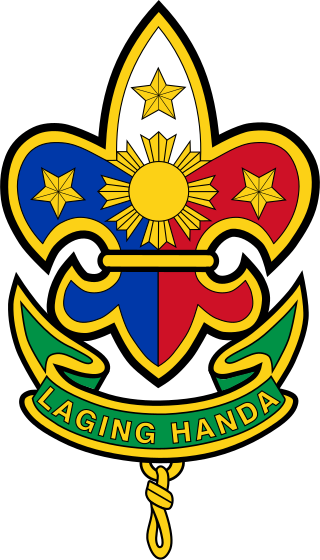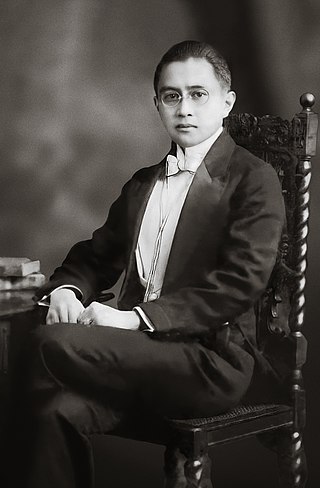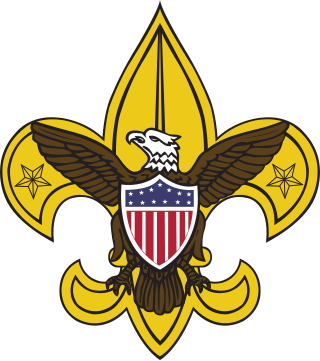
The Boy Scouts of America is one of the largest scouting organizations and one of the largest youth organizations in the United States, with about 1.2 million youth participants. The BSA was founded in 1910, and since then, about 110 million Americans have participated in BSA programs. BSA is part of the international Scout Movement and became a founding member organization of the World Organization of the Scout Movement in 1922.

The Boy Scouts of the Philippines (BSP) is the national scouting organization of the Philippines in the World Organization of the Scout Movement. The Scout movement was first introduced in the Philippines on 1910 during the American Occupation. It was "granted Recognition as a Member Organisation of the Boy Scouts International Conference...with effect from October 31, 1936" by virtue of certification signed by J. S. Wilson, Olave Baden-Powell, and Daniel Spry.

Josephus H. Stevenot was an American entrepreneur and U.S. Army officer in the Philippines with many accomplishments, but today mostly remembered in the Boy Scouts of the Philippines as a co-founder.

The National Scout jamboree is a gathering, or jamboree, of thousands of members of the Boy Scouts of America, usually held every four years and organized by the National Council of the Boy Scouts of America. Referred to as "the Jamboree", "Jambo", or NSJ, Scouts from all over the nation and world have the opportunity to attend. They are considered to be one of several unique experiences that the Boy Scouts of America offers. The first jamboree was scheduled to be held in 1935 in Washington, D.C. to celebrate the 25th anniversary of Scouting, but was delayed two years after being cancelled due to a polio outbreak. The 1937 jamboree in Washington attracted 25,000 Scouts, who camped around the Washington Monument and Tidal Basin. The event was covered extensively by national media and attended by President Franklin D. Roosevelt.

Eagle Scout is the highest rank awarded to a Senior Scout in the Boy Scouts of the Philippines (BSP). To be awarded the rank, a Scout must lead in planning and doing two community service projects and earn a total of 23 merit badges consisting of 17 required merit badges and 2 specialist ratings. After achieving the rank of Eagle, a Scout may earn an Anahaw award for earning 2 additional specialist ratings.

Edward Urner Goodman was an influential leader in the Boy Scouts of America (BSA) movement for much of the twentieth century. Goodman was the national program director from 1931 until 1951, during the organization's formative years of significant growth when the Cub Scouting and Exploring programs were established. He developed the BSA's national training center in the early 1930s and was responsible for publication of the widely read Boy Scout Handbook and other Scouting books, writing the Leaders Handbook used by Scout leaders in the United States during the 1930s and 1940s. In the 1950s, Goodman was Executive Director of Men's Work for the National Council of Churches in New York City and active in church work.

William Hillcourt, known within the Scouting movement as "Green Bar Bill", was an influential leader in the Boy Scouts of America (BSA) organization from 1927 to 1992. Hillcourt was a prolific writer and teacher in the areas of woodcraft, troop and patrol structure, and training; his written works include three editions of the BSA's official Boy Scout Handbook, with over 12.6 million copies printed, other Scouting-related books and numerous magazine articles. Hillcourt developed and promoted the American adaptation of the Wood Badge adult Scout leader training program.

Don Gabriel A. Daza, KGCR, KC*SS was the first Filipino electrical engineer and one of the charter members of the Boy Scouts of the Philippines (BSP). He co-founded the Philippine Long Distance Telephone Company (PLDT), Philippine Telegraph and Telephone Co. (PT&T), Philippine Electric Manufacturing Company (PEMCO), Phelps Dodge Philippines. He was the Supervising Engineer and Assistant General Manager of Visayan Electric Company (VECO) and led its expansion out of Cebu City. President and Chief Scout of the BSP in 1961-68. In 1945, President Osmeña appointed Daza to be a member of the Board of Directors of the Manila Railroad Company and the Philippine Charity Sweepstakes Office. In 1950, he was Vice-Chairman of the National Power Corporation and on the board of directors of the Manila Hotel Company. In 1951, Daza was appointed by President Quirino as a founding member of the Board of Directors of the National Shipyard and Steel Corporation. President and Director of the National Economic Protection Agency (NEPA) in 1956.

Scouts BSA is the flagship membership level of the Boy Scouts of America (BSA) for boys and girls between the ages of typically 11 and 17. It provides youth training in character, citizenship, and mental and personal fitness. Scouts are expected to develop personal religious values, learn the principles of American heritage and government, and acquire skills to become successful adults.
The Scout movement in the Philippines is served by

The 10th World Scout Jamboree was held 17–26 July 1959 and was hosted by the Philippines at Mount Makiling, Los Baños, Laguna. Dubbed "The Bamboo Jamboree" due to the prevalence of bamboo and nipa palm. There were a total 12,203 Scouts from 44 countries. The theme was "Building Tomorrow Today". It was the first World Scout Jamboree to be held in Asia, and as well outside Europe and Canada.
Antonio Concepcion Delgado was an industrialist and civic leader who was appointed Philippine Ambassador to the Vatican.

United Arab Airlines Flight 869 was an international scheduled passenger de Havilland Comet 4C flight from Tokyo, Japan, to Cairo via Hong Kong, Bangkok, Bombay and Bahrain. On 28 July 1963 it was being operated by a de Havilland Comet registered as SU-ALD, when on approach to Bombay's Santa Cruz Airport it crashed into the Arabian Sea off Bombay on 28 July 1963 with the loss of all 63 passengers and crew on board. Among the 55 passengers was the Philippine delegation of 24 Boy Scouts and adults traveling to the 11th World Scout Jamboree in Greece.

Elwood Stanley Brown was an American sports organizer in Illinois, Manila, Europe, and South America. In his short life, he had a number of major accomplishments, such as, the intensive promotion of sports among Filipinos. Introducing international sports competitions in Asia. The promotion of the Olympics around the world. Founding of the first Boy Scout troops in the Philippines (1910), initiating and organizing the American Expeditionary Forces games and its corollary the Inter-Allied Games at the end of the War in Europe.
Scouting activities in the Philippines have been promoted by various organizations: the YMCA, the Boy Scouts of America, the Camp Fire Girls, the Boy Scouts of the Philippines, the Girl Scouts of the Philippines, and the Boy Scouts of China.
Sherman Leo Kiser was a US Army officer. He is famous in Philippine Boy Scouting history as the founder of the defunct Lorillard Spencer Troop, an early Boy Scout Troop in the Philippines, and is mentioned in every account of Philippine Boy Scouts history.

The 11th World Scout Jamboree Memorial Rotonda, also known as the Boy Scout Circle, is a roundabout in Quezon City, Metro Manila, the Philippines. Located at the intersection between Timog and Tomas Morato Avenues, it serves as the boundary between Barangays South Triangle, Laging Handa and Sacred Heart.
Arsenio N. Luz was a Filipino showman, businessman, journalist and educator, remembered for being the General-Director of the Philippine Carnival which ran the Manila Carnival. He was an attaché for several Philippine Independence Missions to the U.S. as the representative of the press. He led trade negotiations during the transition to the Commonwealth and served as President Manuel L. Quezon's economic advisor at Malacañang throughout the Commonwealth Period. He was a charter member of the Boy Scouts of the Philippines and the first Filipino President of the Rotary Club of Manila. He was manager of the Philippine Government Commercial Agency's New York branch and represented the Philippines at several conventions and expositions.












